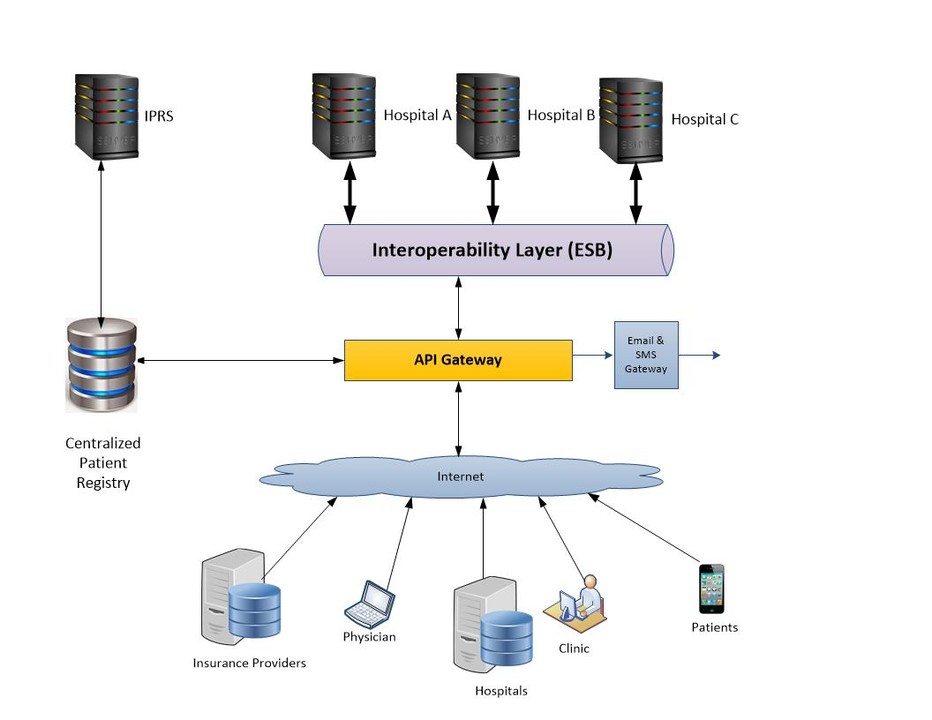
A Service Oriented Architecture Approach to Implementing an Omnichannel Personal Health Record System
The overall objective of this research was to implement an Omnichannel Personal Health Record (PHR) System based on Service Oriented Architecture (SOA) framework to facilitate patient-centred self-care and collaboration with healthcare providers. The specific objectives under the study were to understand people’s perception on personal health record systems, establishing the current mechanisms of identifying patients in health facilities, developing a Service Oriented Architecture (SOA) model and prototype for the proposed Omnichannel PHR System, and finally testing, evaluation and validation of Omnichannel PHR prototype system developed. The omnichannel solution enabled availability of PHR data anytime, anywhere as well as any terminal over cloud technologies. PHR data need to available anytime, anywhere and any terminal (channel or device) with patient consent.
IBM’s Service Oriented Modelling and Architecture (SOMA) phases were used to model, identify, select, implement, deploy and monitor the services in the Omnichannel PHR solution. Questionnaires and interviews were the primary data collection tools. A sample of patients (individuals) and healthcare personnel provided responses to questionnaires. Healthcare personnel were also interviewed about the current patient identification methods and medical data handling processes.
The findings of the study revealed that most patients had never heard nor used PHR systems whereas the majority were willing to use it if their physicians recommend them. Even though more than half the health facilities in Kenya have a unique patient identification scheme, they are not interoperable between hospitals which further hampers medical data sharing among healthcare facilities. Post-implementation results revealed that data sharing between patients and healthcare personnel significantly improved by rolling out device agnostic means (omnichannel systems) where patients and healthcare personnel such as physicians can share and access medical history using web, mobile or other platforms. This was facilitated by adoption of Service Oriented Architecture. The findings have implications on patient care improvement, lower costs of treatment and reduced cases of misdiagnosis.
Although not all aspects of PHR were addressed, only the generic functional requirements of an Omnichannel PHR System, the Service Oriented Architecture provided integration layer that can facilitate interoperability of different channels, devices and third-party systems or applications. The prototype demonstrated the possibility of universal patient identification and medical data interoperability by making it possible for patients to be able to record their medical information using different platforms (web and mobile), as well as monitoring devices (Internet of Things), made possible by SOA without having to carry paper records or cards whenever they are to seek healthcare services. Healthcare professionals can assist the patients in updating their profiles whenever they seek medical treatment. Patients are very cautious about the privacy of their data and were comfortable with having control over who can read or write their records. This research, therefore, recommends open APIs using SOA for central identification and management of personal health records, use of open source technologies and adoption Internet of Things to collect vital patient medical information in real-time. As such PHR data can be available anytime, anywhere, any terminal over cloud technologies.
Finance and Operations Lead @ActionAid | 2020-21 Commonwealth Scholar | ESG | Audit, Risk Management & Compliance
4yGood and Interesting Piece of work here! Would love to see how Data security can be enhanced here.-With Kenya known to have a weak system or No specific data protection Legislation!